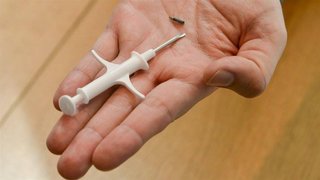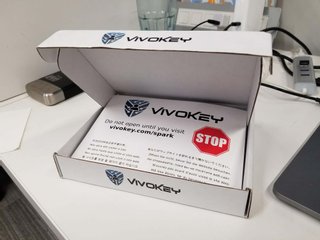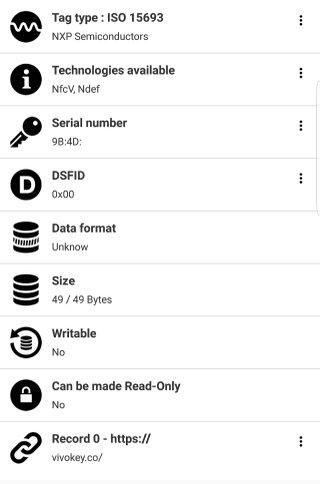801 Labs Research Portal
Biohacking: New VivoKey Spark Implant

So, I got a VivoKey Spark. No, not a VivoKey Flex. This is a new product from VivoKey, that is currently 100% unreleased.
The Spark is similar to the Flex One from VivoKey, but this one, instead of being a flat flexible strip, is in a small glass tube just like every other RFID implant. It's small, compact, and feature rich.
First, let's talk about what VivoKey is trying to accomplish. While all of their marketing is practically non-existent on just about anything they're doing, going so far as to have a one page website with no feature or technical information. However we can still work out some things from what is available.
The VivoKey is...
-
RFID-based implantable technology
-
Runs on NFC frequency and protocol.
-
Aims to be a device capable of
-
PGP/GPG storage
-
2FA storage
-
Payment applications
-
Tap to pay
-
Wallets
-
Addresses
-
Access control
-
Any other RFID/NFC-based technology implementations
VivoKey is a product that's still in it's very early stages, all things considered. The VivoKey Flex recently just entered beta. The VivoKey Spark has not even been announced yet (it is expected to be announced at BDYHAX in the 15th of December). Very little is known about this product, and all information is coming from secondary sources. It is reported that the Spark has less overall storage space, due to its physically small size, but unknown how much of a disparity in storage there will be.
I acquired the Spark through @c00p3r, who runs the Dangerous Minds podcast and is a good friend of DC801. Cooper acquired the Sparks early, directly from Amal @ Dangerous Things. It turns out that neither Amal or Cooper have gotten these implanted. Looks like I am the very first person to have a VivoKey Spark doin' things in their body.
Oooo, what's this? 😁@DangerousThings@c00p3r_7@dmindspodcastpic.twitter.com/UhtW7mDKZb — Pips (@Pips801) December 10, 2018

On opening, there is a card that tells you to STOP! and not continue until you visit vivokey.com/spark. Sadly, the page does not exist (yet). Once I got it, I immediately drove over to a local piercing studio and got it installed.
Below is the installation video of the VivoKey Flex.You don't have to watch it, but if you're curious about the process, it's a quick video.
A description of the video: Hand is sanitized and the needle comes pre-loaded with the glass tag alredy. the needle is pushed through the skin, and the plunger is pressed while removing the needle and leaving the tag behind. In the video, the tag actually was slightly stuck to the needle on removal, so the needle/tag was pushed back in to make sure it stayed.
Once installed, it was time to scan. The major exciting feature is Fidesmo and their application development stack. However, scanning the tag with the Fidesmo app did not work at all. It appears this does not directly register as a Fidesmo/Fidesmo-capable chip.
If you scan it with an NFC app, it reveals this information about the tag.

The tag appears to be emulating a standard NFC tag with enough storage to store a URL on it in the standard NFC URL format. The url is unique per chip. However, when I visit the URL, it forwards me to https://www.vivokey.com/claim-my-spark, which just says "coming soon".
It appears that the chip used in the VivoKeys has the ability to emulate/virtualize NFC partitions on it. This one virtualized a standard ISO 15693 tag with a size just big enough to store the registration URL (49/49 Bytes).
I assume that this is the page where you register the Spark, and probably download an app or something that allows you to actually interact with the device.
Now that a member of DC801 has a VivoKey Spark, we can finally start hacking on it and writing applications for it. All of our research, development, and hacking will be cataloged right here on the 801Labs Research site. Click subscribe below to be kept up to date! 🙌